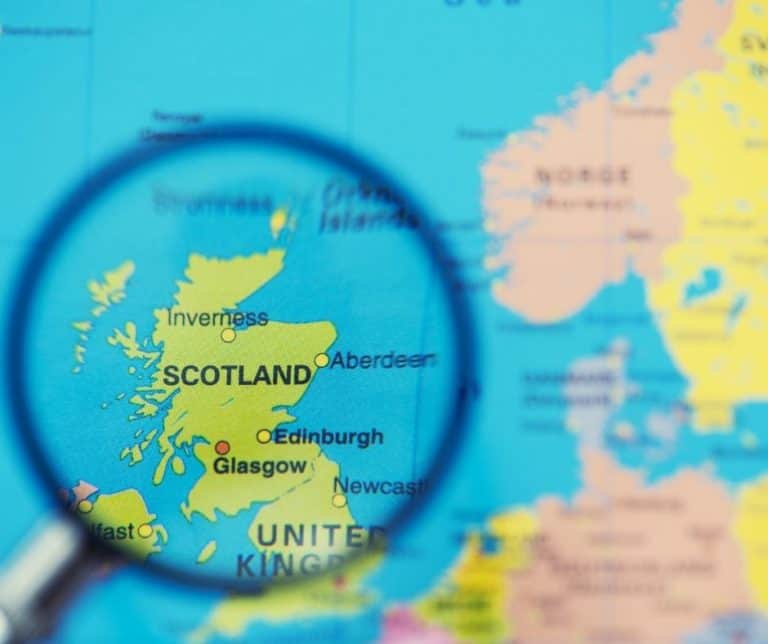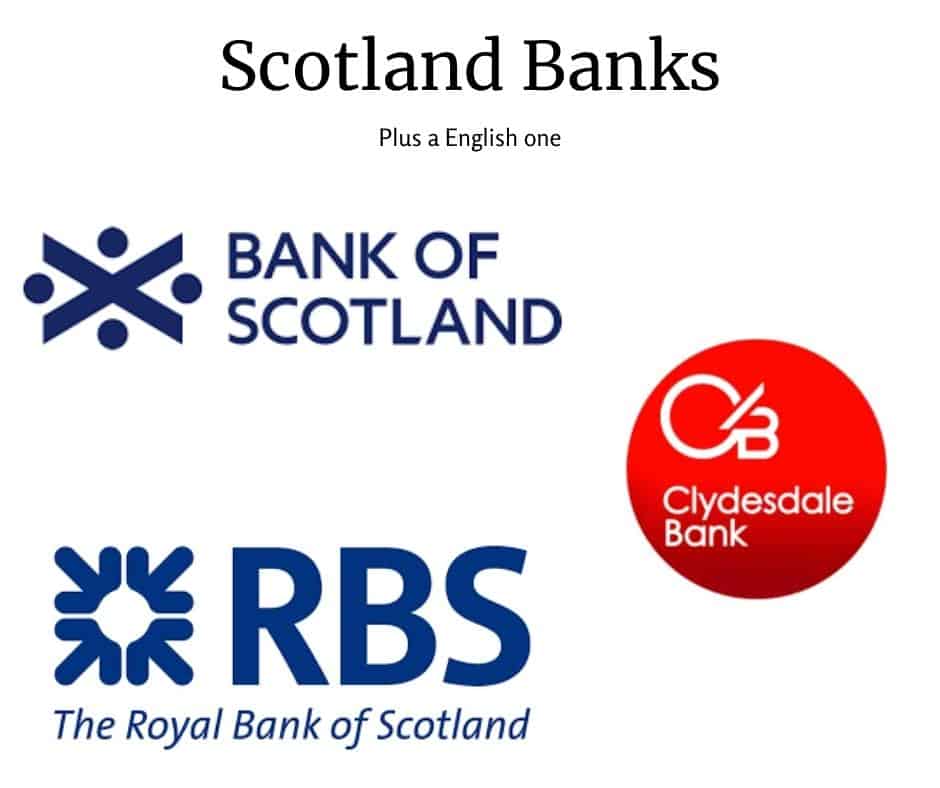
The 3 Banks of Scotland
As the name of this website is “Scotland Notes”, I get lots of people visiting my site looking for information about Scotland Banks Notes, in other words, “money.”
As a visitor, I can see how the Scottish currency can be confusing. How many other countries have acceptable banknotes from 3 plus 1 bank
The confusing world of Scotland Banks
The money used in Scotland is Sterling, not Euro. Sterling is referred to as “Pounds”.
Coinage is “Pence”. 100 Pence to a Pound
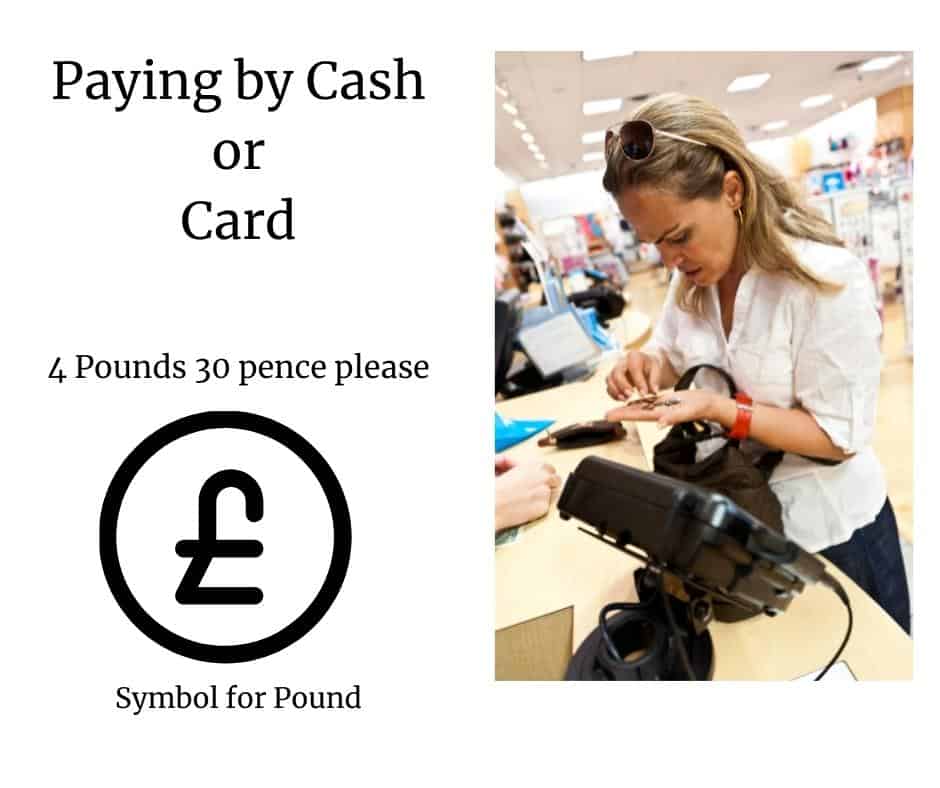
Pounds also have the slang term ‘Quid.’
“That will be 5 Quid Pal.”
How many Scotland Banks can issue money
Three Scotland banks plus the UK national bank called the “Bank of England” have authorised and accepted banknotes in Scotland.
Scotland does not have a national bank. The three Scottish Banks are commercial everyday-style Banks (or used to be)
Most of you will be here to check what the banknotes look like, as you might be worried you will get a fraudulent note.
Rest assured, you are extremely unlikely to be passed a ‘dud’ or fake note from any business in Scotland.
Later, I will give a simple history of how Scotland ended up with four different banknotes in circulation.
But first, let’s get the essential everyday information to you.
Who are the Banks with notes in circulation
…and what do they look like
- The Bank of England
- The Bank of Scotland
- The Royal Bank of Scotland
- The Clydesdale Bank
The face value of the notes you will come across in everyday life are
For ease of identification, all three issuing banks in Scotland use the same base colour for each denomination:
- Blue for £5,
- Brown for £10,
- Purple for £20,
- Green for £50,
The notes are all the same size, including the Bank of England.
Bank Of England (UK Standard)
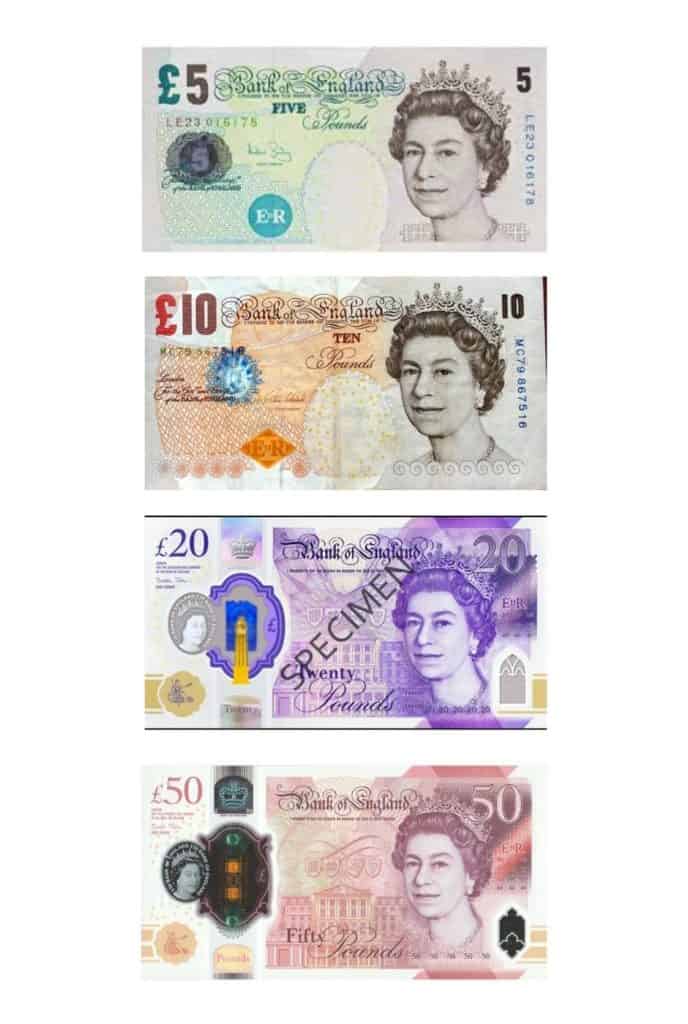
Bank Of Scotland Notes
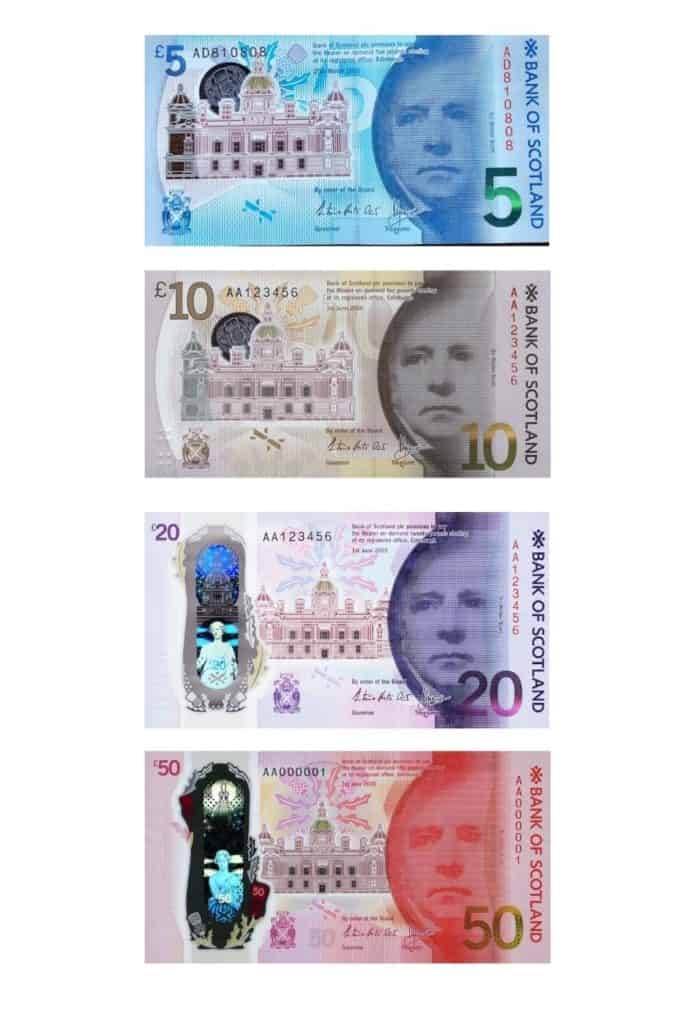
Royal Bank Of Scotland Notes
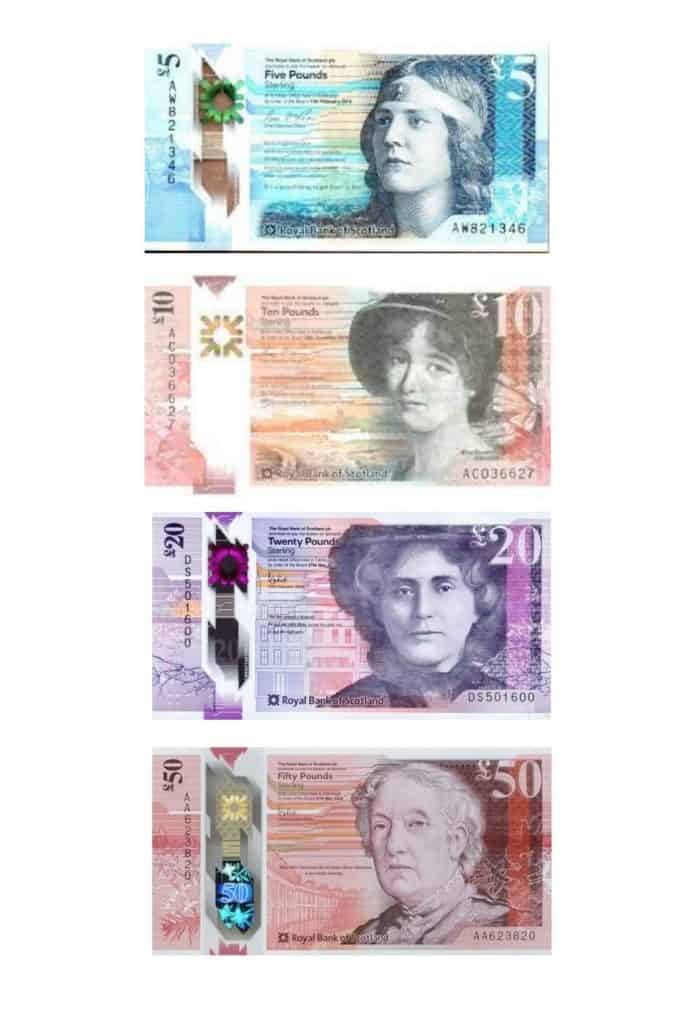
Clydesdale Bank Notes
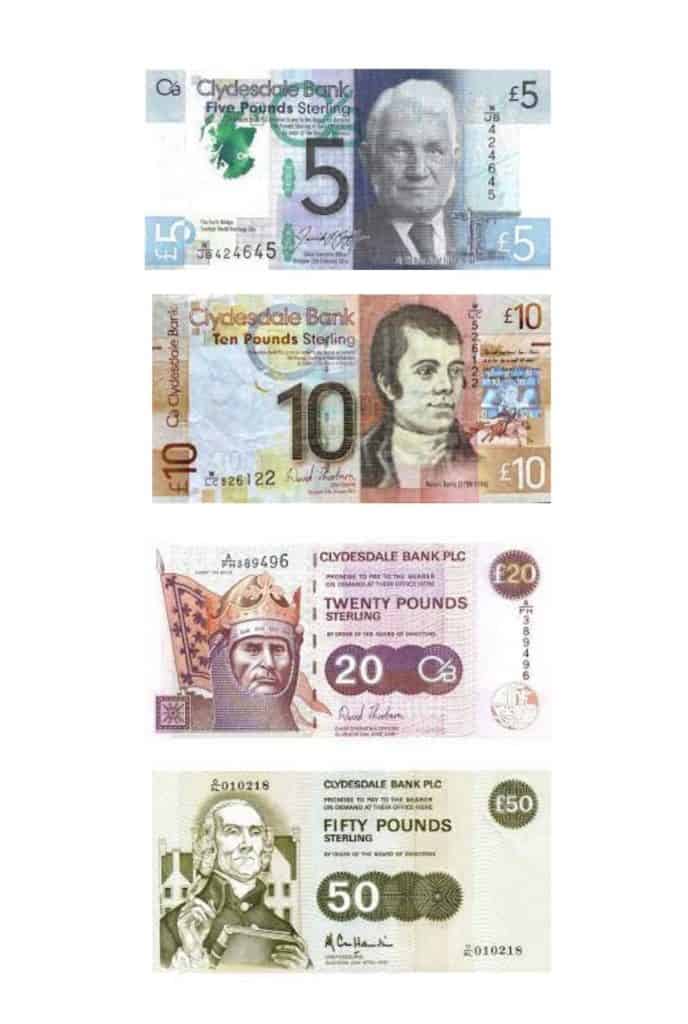
I am sure you will agree there are some beautiful banknotes.
Of course, payment by card has increasingly become the standard way to make your payment, but there is nothing like passing over that banknote.
The physical currency will be around for a lot longer yet.
Good to know stuff
Standard Bank of England notes (UK Sterling) are accepted everywhere in Scotland; you do not have to try to get ‘Scottish Money” before arriving.
Paying by Bank of England notes is entirely acceptable if there is a change, you will get back Scottish notes.
The ATM will only issue Scottish notes.
South of the Border, you might have difficulty spending the North of the border money.
Use up your Scottish Notes before leaving Scotland. You can exchange them for English Notes at any bank.
There is no difference in the value of all the notes. There is no “exchange Rate.”
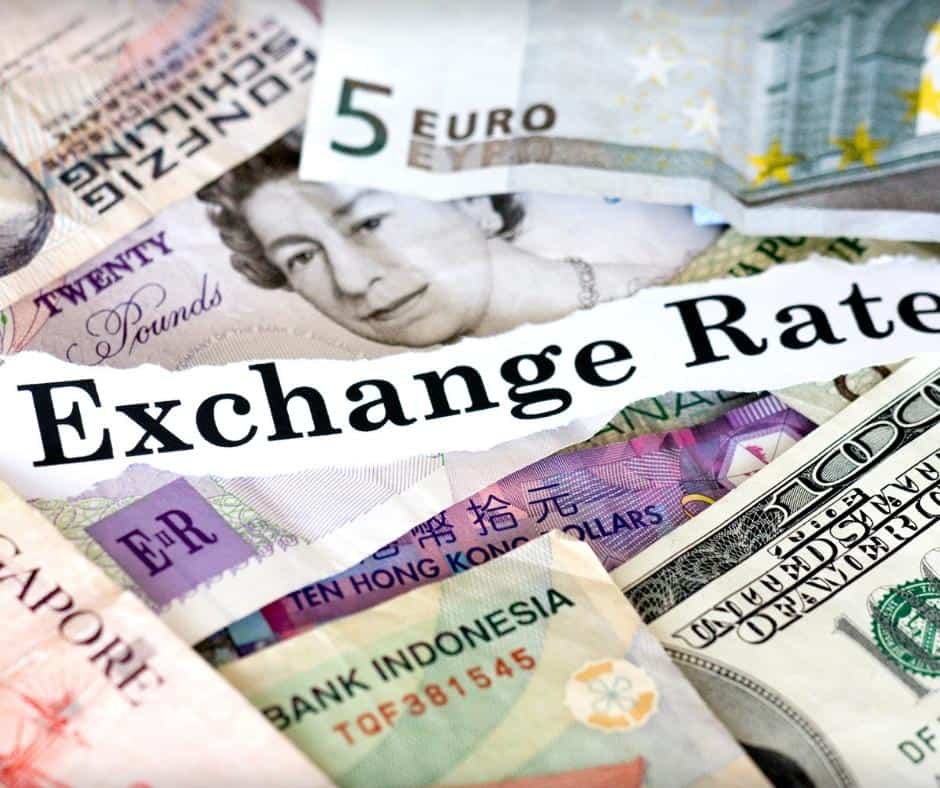
You can use this calculator for the exchange rate outside of the UK. It also has a handy app for your Phone.
Pounds Sterling is usually abbreviated to GBP.
If you have 5 minutes, grab a coffee, and I will tell you about the history. Nothing ever simple in Scotland
Potted History of Scotland Bank
It was an Englishman, John Holland, who was the founding Father of the Bank of Scotland. It came into existence by an Act of the Scottish parliament.
This Act gave its sole rights for Banking in Scotland for 21 years. The bank issued its own notes.
32 years later, in 1707 by the Royal Charter (Charles II), The Royal Bank of Scotland (RBS) was established
The Bank of Scotland and the Royal Bank of Scotland (RBS) immediately and commercially went to war, each doing whatever they could to drive the other out of business.
Both Banks were allowed to continue to issue their notes under the Act of Union 1707
Many dirty tricks and skullduggery were employed between them.
Eventually, realising how much damage was being caused to both. A truce was called in 1751
In 1838 The Clysdale bank opened its doors in Glasgow and Edinburgh. It was backed by middle-class businessmen and offered itself as a “local bank.”
The Clydesdale bank grew mainly through acquisitions and mergers during turbulent financial times in Scotland.
Most of the smaller regional banks were going out of business.
After a particularly severe financial mess was sorted out, the “Banknote (Scotland) Act” was passed, regulating what notes could be issued and by which Banks.
The Scotland banks have to hold the equivalent amount of Bank of England money (UK Sterling) to the amount of money issued as banknotes.
This ‘Guarantee’ money is stored with and by the Bank of England
Three Scotland Banks
So we now have three Scotland banks that can issue notes in Scotland apart from the Uk standard Bank of England notes.
The Clydesdale banknotes have the largest share of notes in circulation, but they seem to be reducing the amount significantly as contactless payments become the preferred method. Also, the bank has been taken over.
None of the Scottish banks exists in their own right anymore. All have been merged and swallowed up over the years, and only the name remains.
But still, Scots love their “own money”, and I think the designs on the Scottish Notes depict the incredible history and people.
If you plan a future trip to Scotland, you should consider money matters in your what to pack list.
As always, your comments and questions are welcome. Please type them below or join me on Facebook.




